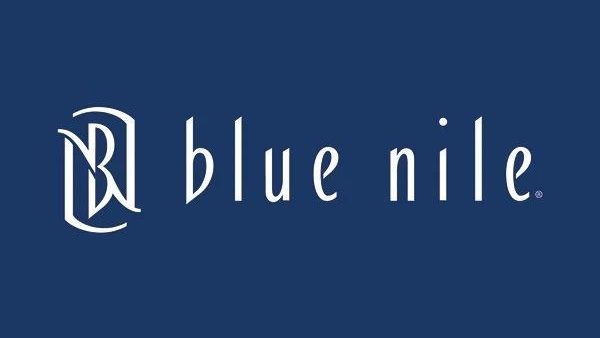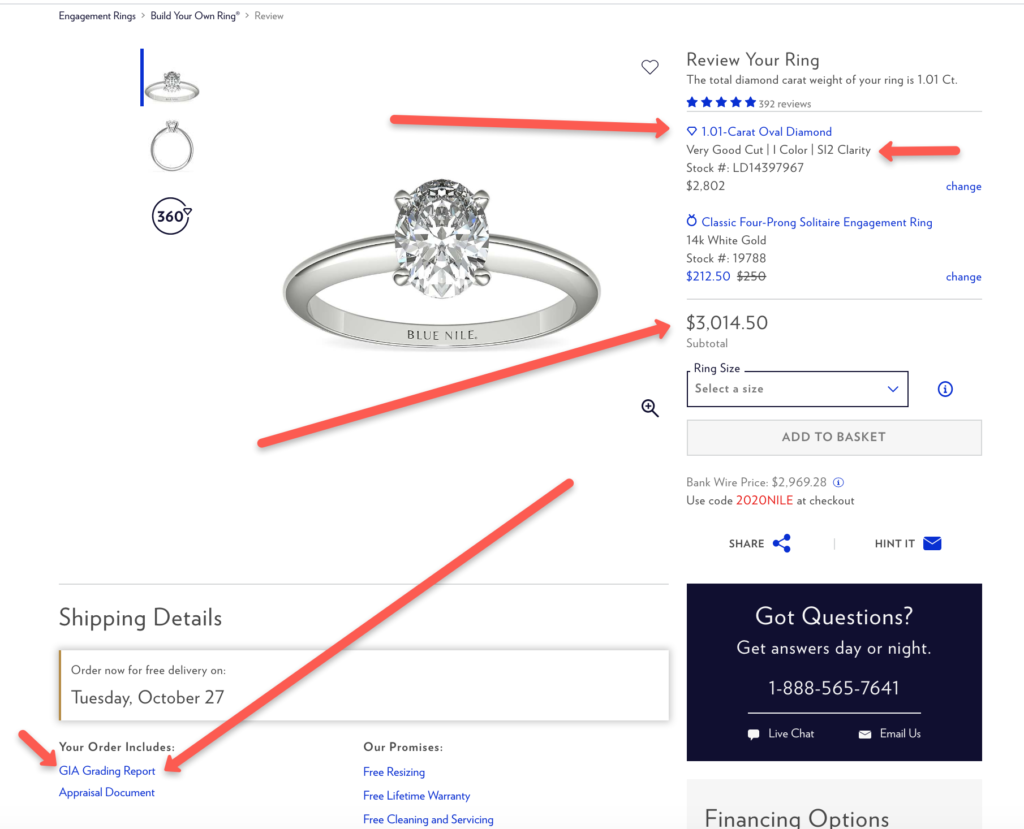Blue Nile Review
If you’re not at least shopping Blue Nile, then you’re not really shopping for a diamond.
What is Blue Nile?
Blue Nile is the world’s largest online diamond reseller. The company was founded in 1999 and is headquartered in Seattle, WA. Blue Nile went public in 2004. In 2017, the company was acquired by Bain Capital and Bow Street, LLC.
Blue Nile is that big a player in the diamond business. Whether or not you’re shopping for diamonds online, in stores, or both, you should at least see what Blue Nile can offer.
Even shopping at Tiffany, or any other high-end store, won’t necessarily get you a better diamond. It won’t matter how much more money you may spend. As you’ll see in our Blue Nile review, spending more money doesn’t at all mean you’re going to get a better diamond.
You have to know what you’re looking for.
And you have to be able to find it.
That’s exactly what Blue Nile makes possible. (James Allen is also good at allowing you to find just what you want. I don’t know of any other jeweler who comes close to these two.)
This Blue Nile review will do three things for you.
First, it will orient you as to why Blue Nile is must-shop destination.
You’ll see the reason why, even if you don’t end up buying from them, you’ll be glad you shopped them. And you may find the best deal there.)
Second, you’ll come away with a clear understanding of when you should buy from Blue Nile, and when you shouldn’t.
Getting the best price on a diamond, and ordering on the Internet, isn’t always the right choice. You may already have guessed one such scenario.
Third, you’ll know exactly how to comparison shop at Blue Nile in order to get a better diamond for less money.
You’ll be able to take a ring you’re considering at Zales or Tiffany (or anywhere else) and search Blue Nile systematically for similar gems.
You’ll be able to find a virtually-identical diamond, and a comparable setting, look at the (vast) difference in price, and make a decision.
And I can almost guarantee you that you’ll save a ton of money. The savings can sometimes be up to 60% or more. I’m not kidding.
That’s what Blue Nile’s business model accomplishes. A Zales or a Tiffany can’t hope to compete on price, because their business models are so different from Blue Nile. (James Allen can. James Allen and Blue Nile go neck and neck. But that’s a whole different review.)
Is Blue Nile cheaper?
Yes, Blue Nile diamonds are much less expensive than nearly every other retailer. Only other online jewelers like James Allen can compete with Blue Nile on price.
Let me illustrate.
These examples are 100% not cherry-picked.
In fact I think it would be impossible to find an example where Blue Nile diamonds were more expensive than the equivalent diamonds at Zales, or Jared’s, or Tiffany, or any brick-and-mortar jewelry store.
That includes the fancy stores aimed at the highest-income shoppers. It also includes stores such as Zales which have traditionally appealed to middle-income as well as high-income shoppers.
And by the way, lest you or your partner think that Blue Nile is for cheapskates, think again.
True, Blue Nile sells some diamonds that almost anyone can afford, because their selection is massive. (At time of publication, Blue Nile had over 12,000 diamonds for sale under $500.)
But they also sell diamonds that only the 1% can pay for. For example, check out this 10-carat round cut diamond for $1,037,102.
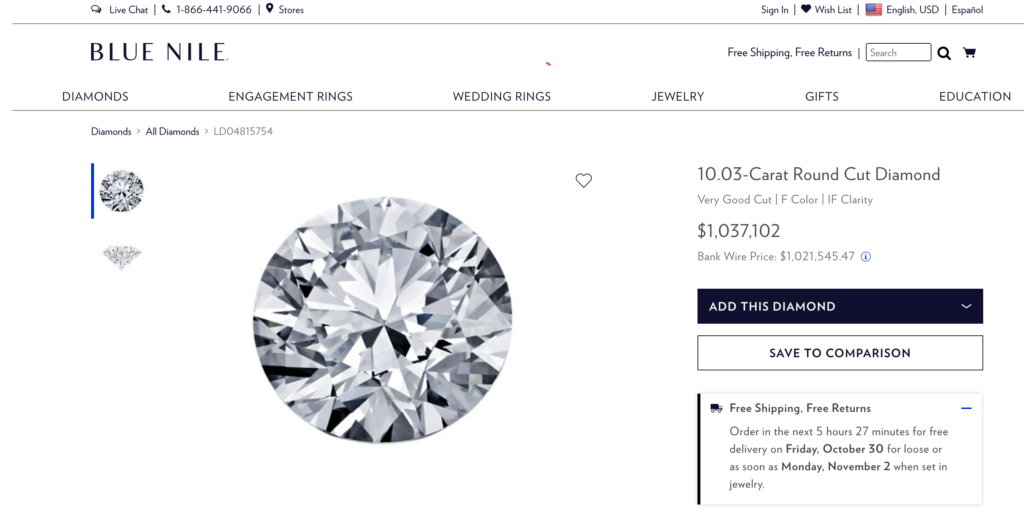
Or this incredibly clear, beautiful $793,000 10-carat emerald cut diamond.
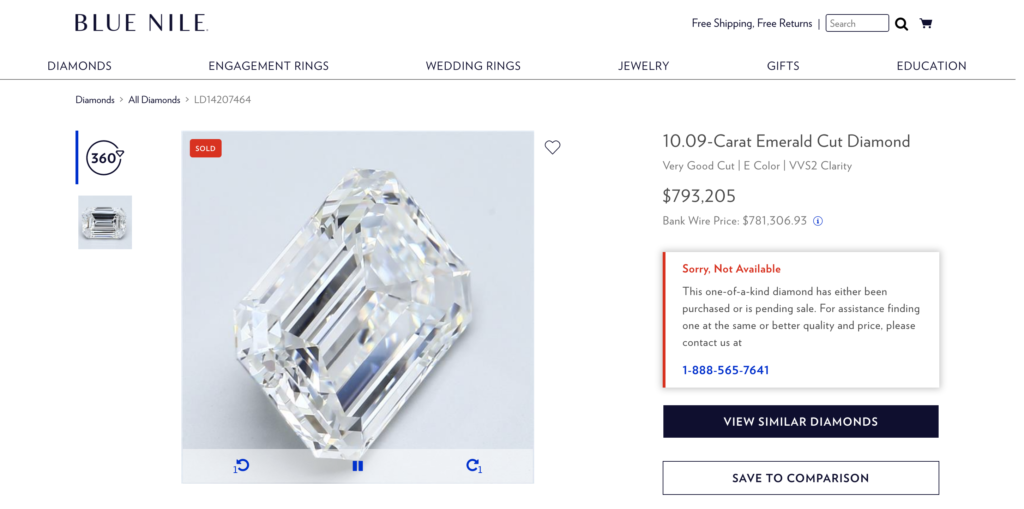
Blue Nile vs Zales (and most other jewelers)
I want you to be able to do this kind of easy comparison shopping for yourself. So I won’t just provide screen shots. I’ll walk you through it.
And it’s easy to do.
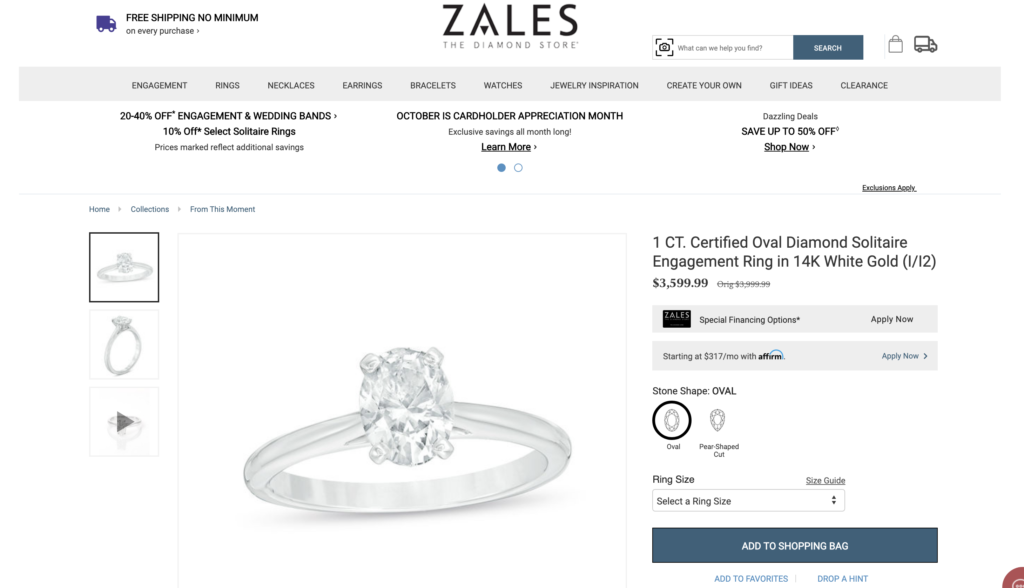
Let’s start with a ring at Zales. (If you’re not already familiar, Zales is one of the largest chain jewelry stores in the United States. Its parent company also owns other popular chains like Kay and Jared).
The Zales diamond we’ll use for comparison is a 1-Carat solitaire. The shape is oval. The color is I. The clarity is I2. It’s supposedly certified, but they don’t say which lab (GIA, AGS, IGI, etc.). More about that below.
It’s on a 14K white gold ring setting. Pretty simple and straightforward.
The price is $3,599.99, supposedly marked down from $3,999.99.
“Awesome! We’re getting a deal! Right?” Well … let’s compare to Blue Nile..
But first, look at this very important information about “certificates.” Don’t get fooled!
Diamond certificates vs grading reports … which is it?
A diamond certificate is not necessarily the same as a grading report.
A grading report from the Gemological Institute of America (GIA) is the best document to have. Also acceptable are grading reports from the American Gemological Society (AGS) or the International Gemological Institute (IGI).
A GIA grading report is a detailed official document. It tells you all the specs of a diamond, as attested by a third-party, unbiased gemologist. It’s not from the store. It’s from a third-party expert with no stake in the gem’s sale or its value. The expert’s only job is to grade diamonds without bias.
On the other hand, a certificate is just be a piece of paper, issued by the retailer itself, stating the weight and the shape.
Read that again: A diamond certificate can be from the retailer itself. Not from a third-party, unbiased gemologist. Now, it’s possible they mean grading report when they say certificate. Most people — even some jewelry store employees — don’t understand the difference. But it’s impossible to say for sure without seeing the document.
And you may also notice: Zales doesn’t make their certificate available online that I could find.
The only way to tell if you’re getting the real deal (a GIA grading report, or an AGS grading report, or an IGI grading report) is to see the actual document.
How much cheaper than Zales is Blue Nile?
To easily create the same ring at Blue Nile, start at this diamond search.
- Select Oval.
- Then select 1-carat.
- Then select the color I.
Ok, now it gets really bad for Zales. Sorry, I’m just reporting the facts. Zales also does many things right.
But look at the clarity score of the Zales diamond pictured above. It’s I2. (Not SI2 — big difference.)
I2 is way down the quality scale of clarity.
Blue Nile doesn’t even feature diamonds of such low clarity score.

Stick with me.
4. To complete this price compare, we have to select the lowest score of clarity that Blue Nile even has. And that is SI2. So, select that in your sliders at Blue Nile.
It will look something like this:
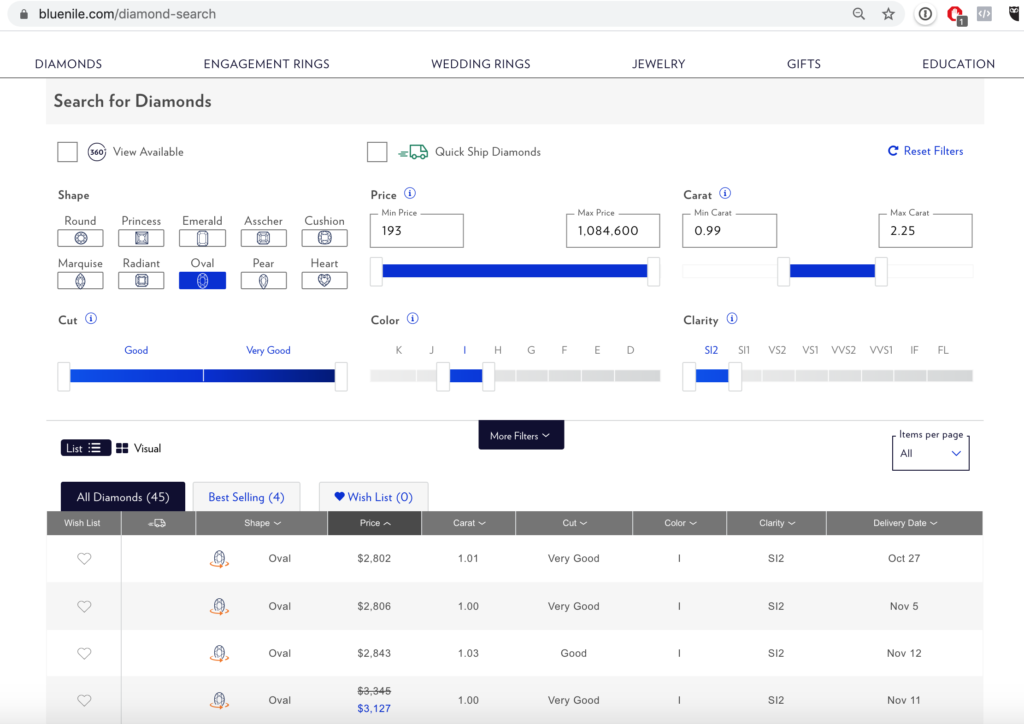
5. Now click through to that $2,802 diamond. (Or whichever one is cheapest, when you happen to search.)
6. Add that to a ring setting. I found this one. It’s 14K white gold, just like the Zales setting.
This is what you get at Blue Nile:
- A better clarity score
- A GIA diamond grading report
- And, likely, a better cut quality.
Everything else is the same. Total cost? $3,014.50 at Blue Nile compared to $3,599.99 at Zales.
Compared to Zales, at Blue Nile, you save about $600 for the same ring, and you get an objectively better diamond.
So, yes, Blue Nile’s prices are better than (almost) every other seller.
- Blue Nile is cheaper than Zales.
- Blue Nile is cheaper than Jared.
- Blue Nile is cheaper than Tiffany (by far — you’re paying a BIG premium for that little blue box).
- Blue Nile is sometimes cheaper than James Allen, the other big online diamond jewelry. (But this depends — Blue Nile and James Allen are constantly competing, so it’s best to shop both).
Is Blue Nile better than SuperJeweler? Or Szul?
SuperJeweler and Szul are discount jewelers specializing in lower-end diamonds and settings than most of what you’d find at Blue Nile. When comparing the exact same quality of diamond, Blue Nile will be competitive if not outright better priced.
Szul and SuperJeweler are not really in the same league as Blue Nile.
As we’ve seen, even Zales featured a diamond engagement ring with a I2 clarity score, which is lower quality clarity than anything on Blue Nile’s filters.
Rarely, Szul or SuperJeweler may offer engagement rings with grading reports. But the selection is virtually nil. And you can’t see any 3D imaging of the diamonds.
Personally, I’d always recommend Blue Nile or James Allen over any discount jeweler such as Szul or SuperJeweler for diamond engagement rings.
Those sites are great for less expensive items such as rings and bracelets and jewelry that’s for fun and fashion. But for engagement rings? I don’t recommend them.
Remember: always compare apples to apples.
Compare all the qualities of a diamond. At Blue Nile, it’s easy to do with their sliders and filters.
And if a diamond doesn’t have a grading report, then take any stated specs with a grain of salt.
I’m not saying any jeweler would ever lie or shade the truth. But subtle differences in quality can mean massive differences in diamond prices. So, you must be aware of the incentive for sellers to take advantage of consumers’ ignorance.
That’s the whole reason the GIA, AGS, and IGI were created. To act as unbiased graders of diamonds. So that the industry could be respected and trusted.
Selection of diamonds at Blue Nile
Blue Nile has enormous selection of diamonds. Right now, their inventory includes over 144,000 diamonds.
That’s rivaled only by James Allen at 185,000 at the time of publication.
But seriously, with numbers that big, the actual score doesn’t matter, right? Practically speaking, the inventory might as well be limitless.
And more diamonds are added all the time.
Which brings us to Blue Nile’s business model. It’s fascinating, and has advantages and disadvantages for the consumer.
How can Blue Nile sell diamonds so cheaply?
Blue Nile can sell high-quality diamonds for much less than competitors because Blue Nile doesn’t own the bulk of their inventory. They partner with diamond suppliers and feature the suppliers’ inventory on their site.
Blue Nile beats all the old diamond retailers by so much in price while offering better diamonds. And they offer a selection so huge you’d never get to the end of it.
It’s all possible because Blue Nile doesn’t have to tie up capital in all of those 144,000 diamonds.
Instead, they partner with diamond suppliers to feature their inventory on Blue Nile’s site. Those suppliers contract Blue Nile to sell them to you, the consumer.
It’s essentially a consignment operation. The suppliers consign their diamonds to Blue Nile to sell.
So you’re not buying from the diamond supplier. You’re definitely buying from Blue Nile. So you know who you’re doing business with.
It’s not like eBay — or even some products on Amazon — where you’re buying from an independent seller who is not eBay or Amazon.
To the contrary. When you place an order for a specific diamond featured on Blue Nile’s site, contracts kick in. Blue Nile pays the seller, thus buying the diamond for Blue Nile.
Blue Nile then immediately sells the diamond to you.
So you’re not risking anything like you sometimes are when buying from an eBay seller. You’re dealing directly with Blue Nile.
It’s just that Blue Nile gets “just in time” buying from whatever diamond supplier is offering the diamond.
Exclusive arrangements mean you pay less
Even better, some diamond suppliers have contracted with Blue Nile to offer their diamonds only to Blue Nile.
This doesn’t affect you so much directly. But indirectly, it makes prices a little better, because the supplier and Blue Nile have more certainty as to how their businesses will be doing. Stability means less risk for any business. Less risk means they (Blue Nile) can cut their profit margins more, thus offering better prices to you.
So the advantages are clear: huge selection and lower prices.
Reasons not to buy a diamond from Blue Nile
It’s hard to find reasons not to buy a diamond from Blue Nile. The prices are better, the diamonds are better, and their logistics and customer-service are world class. If there’s any disadvantage to mention, it’s the slight chance of a logistical snafu.
Make no mistake, Blue Nile delivers the right diamond via insured parcel service (UPS, FedEx) 99+ percent of the time. But like any shipping business, it takes some work and time to get the diamond ring built and sent to you.
You might, for example, purchase a diamond from Blue Nile that’s physically located outside the United States.
Also, the advantage of being able to choose your diamond and choose the setting (the actual metal ring) that you want? That also has a corresponding disadvantage:
And it’s this: It takes time.
You can’t just order a custom engagement ring from Blue Nile and expect it to arrive overnight.
Plan ahead. It only makes sense. A proposal is a big event. You want to order far in advance. Trust the projected timeline on Blue Nile when you order.
Any project manager will tell you: the world can be unpredictable. So order in advance for big projects. I.e., for your proposal.
So, a circumstance in which Blue Nile might not be the best option? That would be when you suddenly need to propose. Like, immediately. You’re going to Vegas tomorrow, for example. Hopefully this is not your life. It does happen, though.
Otherwise, Blue Nile has proven over the decades to give good customer service, stellar prices and selection, beautiful diamonds, and rings from some top designers. (Or plainer rings, if you want a classic, understated look.)
And, even if you are in a rush, Blue Nile stocks some ready-made rings that can ship overnight.
Why buy a Blue Nile diamond if you can’t see it first?
The inability to see a diamond in-person prior to purchase is among consumers’ biggest hesitations to buying a diamond online. Blue Nile offers a perfect 3D image of most of its diamonds, allowing you to thoroughly examine the gem you’re going to buy.
You can examine specific diamonds. Not generic images, but images of specific diamonds.
That means you can see the flaws. And where they are located within the diamond. You can see the sparkle. You can see the facets. You can see the dimensions. Just as if you were examining the diamond under a jeweler’s loupe.
Nothing beats the satisfaction and pleasure you’ll feel seeing the diamond with your own eyes, after it arrives. Computer screens simply cannot transmit the range of light and color from a diamond.
But to evaluate a diamond, Blue Nile’s 3D imaging is extremely useful. And it reveals a disappointing truth about shopping online at Zales, or Jared, or Tiffany: you’re shopping blind. You don’t see the diamond at those stores’ websites. Instead, you see an example of what it kind of looks like, in general.
I might even argue that Blue Nile’s magnified 3D imaging allows you to inspect a diamond even better than you can in person.
Conclusion
You’ve seen now in this Blue Nile review why you should definitely comparison shop Blue Nile before you buy a diamond engagement ring anywhere.
You’ll find better value, better selection, better documentation, better imaging, than almost any other retailer — especially if that retailer needs to rent an expensive storefront!
You also learned in what circumstances Blue Nile may not be a great choice. (If you’re in an extreme hurry.)
Best of all, you walked through the easy (once you do it a couple times) system at Blue Nile for comparison shopping, and building a diamond engagement ring.
Even if you don’t buy from Blue Nile, you’ll have learned a lot, and you’ll be sure that you’ve covered all your shopping bases.
And if you’re like me, you may enjoy window shopping for diamonds at Blue Nile that you may never buy: for example those million dollar beauties that you can enjoy right now, on your computer screen.
Recommended Jewelers
James Allen
James Allen is the most competitive diamond vendor with more than 150,000 loose diamonds in inventory. They have been a leader in selling diamonds online and pioneered 3D imaging so you can see the exact diamond you're buying in exquisite detail. You'll find it hard to beat James Allen in terms of price or selection. Read our James Allen review. |
Whiteflash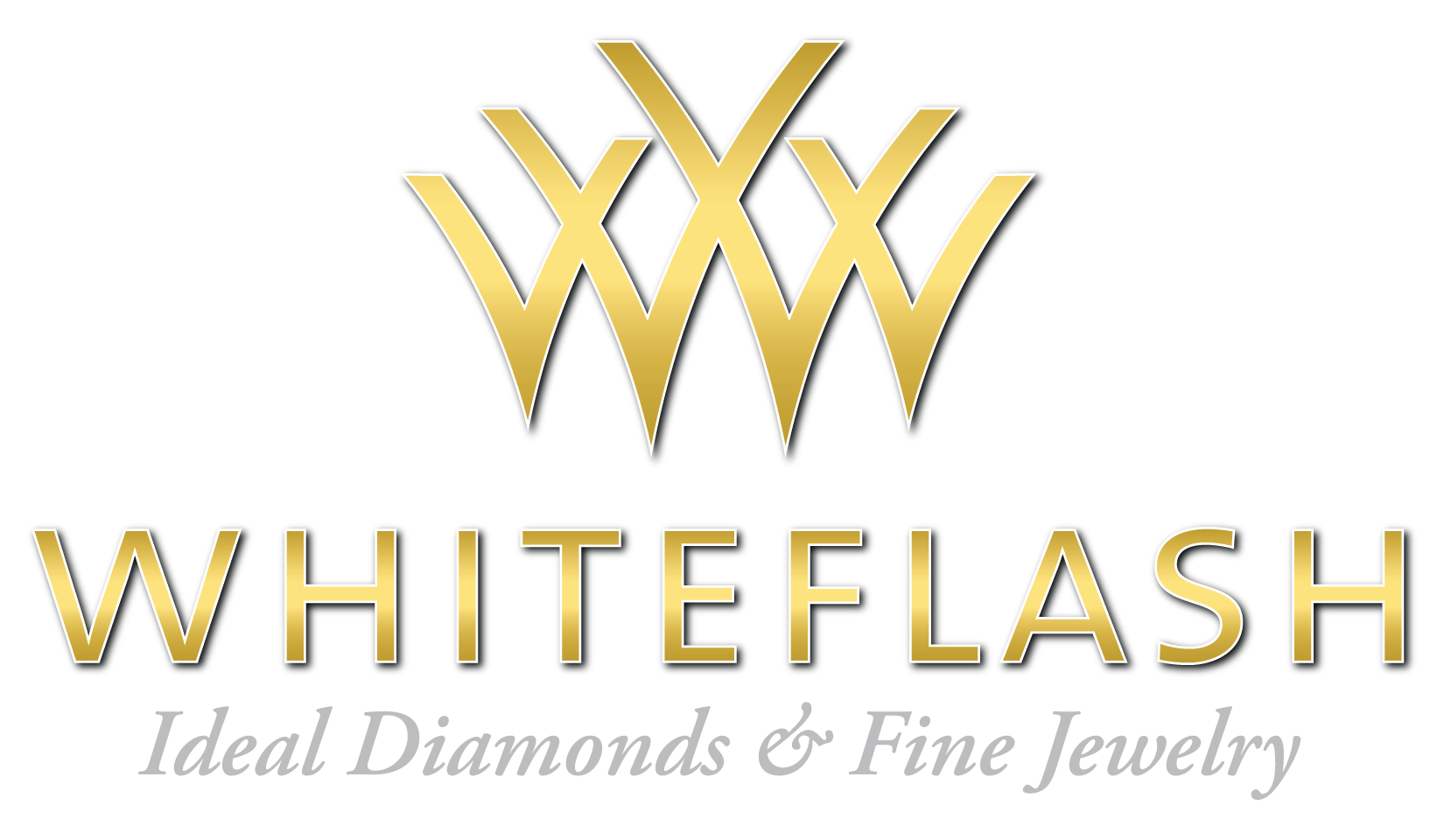
Whiteflash is the home of "A Cut Above" diamonds which are among the best quality round- and princess-cut diamonds in the world. With superior diamond photographs and videos, Whiteflash's diamonds seem to come to life -- even online. Read our Whiteflash review. Shop Whiteflash » |
Brilliant Earth
Brilliant Earth is the global leader in ethically-sourced jewelry. Brilliant Earth goes above and beyond existing standards to offer “Beyond Conflict Free Diamonds” that they select for their ethical and environmentally-responsible origins. With over 120,000 diamonds in inventory, you can be sure to find your perfect diamond and feel good knowing it was responsibly-sourced. Read our Brilliant Earth review. Shop Brilliant Earth » |
Blue Nile
Blue Nile is the world's largest online jeweler. Their reputation for quality and customer service is unparalleled in the industry. Blue Nile offers free shipping, a 30-day return policy and satisfaction guarantee. Read our Blue Nile review. Shop Blue Nile » |
